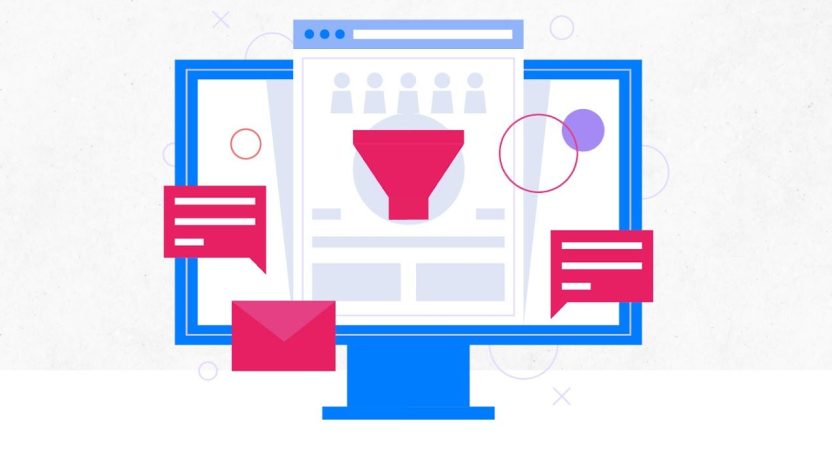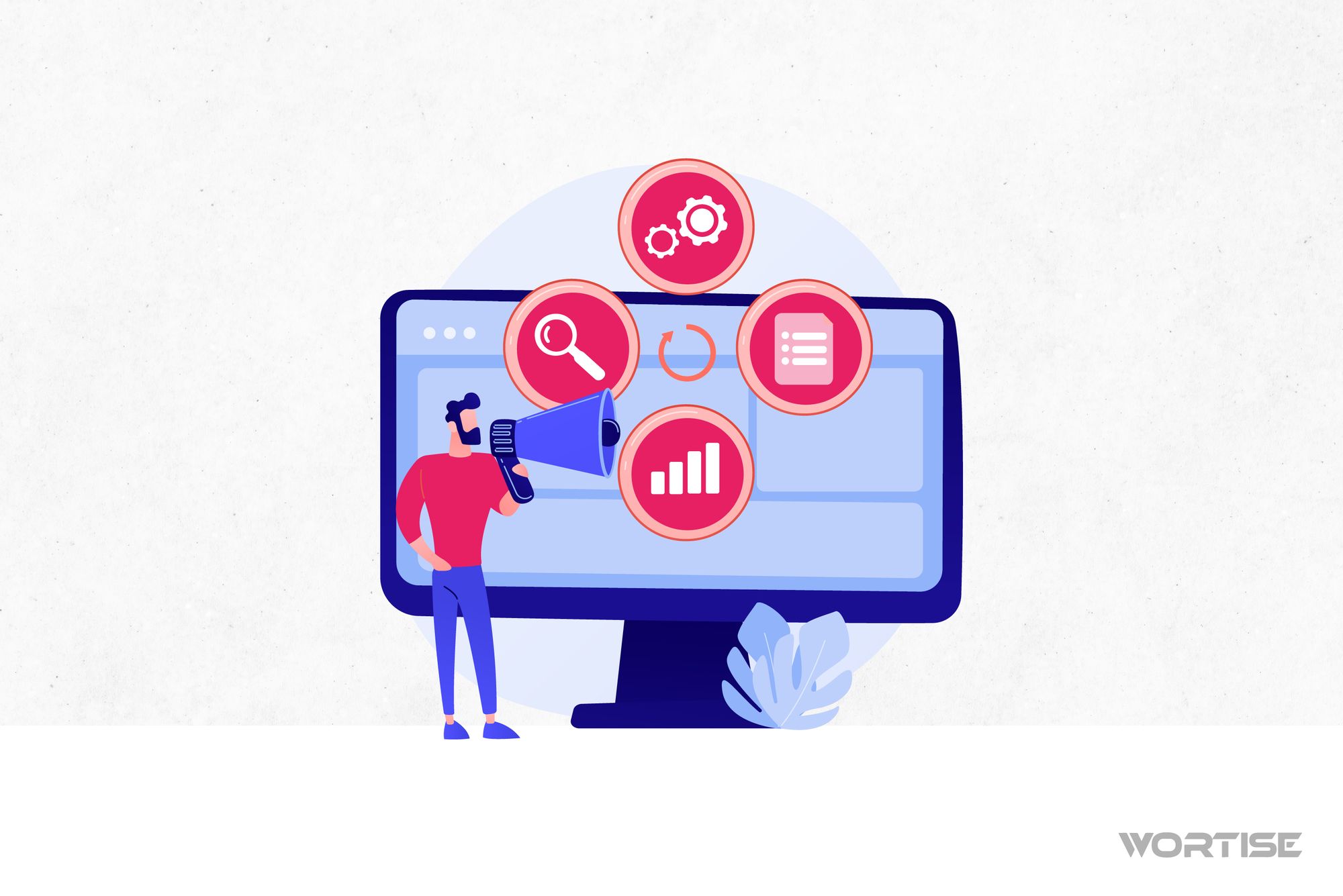Te diremos una verdad que seguramente ya conoces: cada vez más usuarios evitan la publicidad digital. Les molesta tener que ver anuncios de cosas que probablemente no les interesan. Es en medio de ese escenario desafiante donde cada publisher debe monetizar sin importar cualquier obstáculo que se presente, como por ejemplo el bloqueo de anuncios o ad blocking. Siempre hay formas de triunfar y darle rentabilidad a nuestra app o página web.
El ad blocking desafía la viabilidad de los modelos de negocio y supone un problema para monetizar. Repetimos: un problema, no una imposibilidad. Hay estrategias para sobreponerse al ad blocking y salir triunfante.
¿Cuáles son los pasos a seguir? Hemos preparado este artículo para mostrarte la ruta que te permitirá superar el bloqueo de anuncios. ¡Léelo hasta el final!
¿Qué es Ad Blocking?
El ad blocking no es más que una tecnología que bloquea o filtra los anuncios que intentan mostrarse en una página web o aplicación móvil. Los usuarios suelen usar extensiones de navegadores o aplicaciones para bloquear la visualización de anuncios.
Para los usuarios representa una solución efectiva ante la invasión publicitaria, pero para los publishers es un obstáculo molesto que no les permite monetizar de manera correcta, pues reduce la visibilidad y efectividad de sus anuncios.
La relevancia del ad blocking la vemos en las cifras: se prevé que este 2024 generará pérdidas por encima de los 54 mil millones de dólares en todo el mundo, según cifras de PageFair. ¿Lo permitiremos? ¡No!
Ad Blocking, un mal que va en aumento
Aunque sigue siendo una amenaza, el ad blocking era mucho más feroz hace una década cuando los bloqueadores de anuncios se volvieron un boom. Mucha gente comenzó a utilizarlos para reducir la publicidad online.
Ese efecto sigue vigente y solo entre 2021 y 2023 el bloqueo de anuncios aumentó un 11% superando los 900 millones de usuarios en el mundo (la mayoría visitantes de páginas web).
Expertos señalan que tras la pandemia del Covid-19, cuando mucha gente se vio obligada a trabajar en remoto desde casa, hubo un cambio definitivo en el comportamiento de los usuarios y este tema del ad blocking tuvo una tendencia ascendente.
A finales del segundo trimestre de 2023 se registró un importante incremento de bloqueo de anuncios en aplicaciones móviles con un estimado de 495 millones de usuarios.
¿Ves al monstruo al que nos enfrentamos? Es intimidante pero no invencible.
¿Por qué los usuarios bloquean anuncios? Claves para entender el ad blocking para publishers
La principal razón por la que los usuarios bloquean anuncios es porque los consideran intrusivos o disruptivos en su experiencia de navegación. Sienten que su entorno de navegación se ve más limpio sin publicidad. Otras razones son:
- Seguridad: Este es un tema que preocupa a muchos usuarios, pues hay personas que usan anuncios para recopilar datos. Esta preocupación sobre la privacidad hace que las personas sean escépticas respecto a la transparencia de los anuncios, por lo que optan por bloquearlos.
- Velocidad de carga: Si la página web o aplicación móvil son deficientes, los anuncios pueden ralentizar el tiempo de carga. Muchos usuarios quieren evitar un mal rato y bloquean los anuncios a fin de acelerar la carga de los sitios web o apps que visitan.
- Reducción de virus: ¿Cuántos no hemos visitado un sitio web y aparecen anuncios sospechosos? Los usuarios saben que bloqueando los anuncios pueden reducir la exposición a posibles amenazas de ciberseguridad.
- Son irrelevantes: Según un estudio de Interactive Advertising Bureau (IAB), el 46% de los usuarios consideran que los anuncios a menudo son irrelevantes; es decir, no compaginan con los gustos e intereses de los usuarios.
¿Cómo bloquean los usuarios anuncios? Así lo hacen en Android y los navegadores
Aplicar un ad blocking es muy sencillo. No es necesario ser un experto en tecnología para evitar que aparezcan anuncios en pantalla. Básicamente estos son los programas que los usuarios pueden usar para bloquear anuncios:
Tres extensiones para Google Chrome
Adblock Plus
Es gratuita y permite controlar la publicidad web de forma intuitiva. Pero además de eso también impide el seguimiento y bloquea la descarga de virus.
Adblocker
Es ideal para aplicarlo en Youtube. No requiere configuración y es capaz de bloquear cualquier tipo de anuncio, sea banner, video o texto.
AdLock
Es uno de los más usados por su versatilidad: bloquea anuncios en el navegador y en todo el sistema para que el usuario tenga una experiencia de uso limpia y transparente.
Tres bloqueadores para Android
Cabe destacar que estas aplicaciones bloquean mayormente los anuncios emergentes. Hay aplicaciones que ofrecen planes premium a los usuarios para no mostrarles publicidad. Estos tres bloqueadores se usan con frecuencia en Android:
TrustGo Ad Detector
Es distinto al típico bloqueador de anuncios. TrustGo Ad Detector elimina la fuente de anuncios y sus rastreadores; además ayuda a detectar dónde se ocultan las app más molestas y aquellas con riesgo a robar datos personales. Es muy fácil de usar.
AdGuard
Es un bloqueador de pago y sirve para evitar las publicidades en todo el sistema del teléfono, no solo en apps. Tiene una alta utilidad para bloquear mensajes emergentes y anuncios de video.
AdAway
Es capaz de bloquear anuncios en todo el dispositivo móvil y, debido a razones de seguridad, no está disponible en Google Play. El usuario debe descargarla por otros medios –es de código abierto– y usarla para bloquear anuncios con listas blancas y negras, lo que da un óptimo nivel de personalización.
5 estrategias para saltarse el ad blocking para publishers: aprende a vencer este obstáculo
Como editor de una aplicación móvil, enfrentar el ad blocking se vuelve una tarea prioritaria. Antes de caer en la desesperación es que mejor que optes por aplicar estas estrategias que te mostramos a continuación:
Publicidad nativa
Una de las mejores estrategias para vencer el bloqueo de anuncios es la publicidad nativa. Los anuncios tradicionales son más propensos a ser bloqueados, pero los nativos se integran de forma orgánica con el contenido que mira el usuario y logran el objetivo de transmitir el mensaje.
La idea principal de todo es conseguir que los anuncios se vean lo menos intrusivos posibles.
Ofertas de suscripción premium
A todos nos encanta Youtube hasta que aparece una publicidad que arruina la canción. Youtube es consciente de ello y por eso ofrece una suscripción premium sin anuncios, una estrategia que tú también puedes usar sin inconvenientes.
Brinda a tus usuarios contenido exclusivo y funciones adicionales al suscribirse a tu app. Además de generar ingresos por cada suscripción, el usuario quedará satisfecho porque pagará por una experiencia mejorada.
Ganarías por publicidad in-app y por suscripción de usuarios.
Patrocinios y asociaciones
Además de conseguir anunciantes por subastas o los típicos med
ios de publicidad programática, una opción para vencer el ad blocking es buscar patrocinios o asociaciones con otras marcas para integrar contenido en tu app.
¿No lo entiendes? Vamos a explicarlo de forma sencilla. Imagina que un usuario abre una sección de una página web y le aparece un video corto sobre una marca de gaseosas en particular. No se trata de un anuncio, es simplemente un material que fue subido por el editor para que forme parte de su web. Ahora imagina ese ejemplo en una app.
De esta forma, no dependes de los ingresos publicitarios tradicionales sino que monetizas de una manera más orgánica. Si el usuario decide instalar un plugin para bloquear la publicidad, este no tendrá efecto alguno.
Incorporar compras dentro de tu app
Suponiendo que tus usuarios más activos eviten suscribirse a uno de tus planes premium, todavía tienes un as bajo la manga: implementar compras dentro de tu aplicación móvil.
Imagina que tienes una tienda de productos para el cuidado de mascotas y para superar el ad blocking publishers decides vender collares personalizados y camisetas para perros y gatos. Así, generas ingresos sin depender de la publicidad. Eso sí, tendrás que hacer un trabajo titánico de marketing y combinarlo con un buen desarrollo de código.
Mejora la experiencia del usuario
Nadie quiere navegar en un sitio web lento o en una aplicación móvil desactualizada. Además de tus planes de monetización in-app, debes optimizar al máximo tu aplicación para que no sea lenta ni obsoleta.
Esto incluye, entre otras cosas, proporcionar contenido relevante en la app o página web, optimización del rendimiento y personalización de anuncios. Con todas estas cosas el usuario tiene menos razones para bloquear los anuncios o filtrarlos. Las experiencias positivas en los usuarios ayudan a retenerlos y mejorar así la monetización.
Daños del ad blocking en la monetización de los publishers
El ad blocking tiene efectos negativos para los publishers que dependen de los ingresos publicitarios para mantener sus proyectos activos. Es como una plaga que va consumiendo todo poco a poco si no se aborda a tiempo.
Por ejemplo, el impacto más directo es la disminución de los ingresos publicitarios. El ad blocking reduce la efectividad de las campañas publicitarias y, por supuesto, eso se nota en las tasas de clics y visualización. Afecta considerablemente el coste Efectivo por Cada mil Impresiones (eCPM).
Pero no solo eso, también le resta visibilidad a los anunciantes que pagan por mostrar sus productos. De esta forma los advertisers pierden la oportunidad de llegar a su audiencia objetivo y eso repercute en una disminución en la demanda de espacios publicitarios.
Todos estos desafíos influyen directamente en la calidad del contenido que los publishers muestran a la audiencia. ¿Por qué? Al tener menos ingresos encuentran, por supuesto, mayores dificultades para monetizar el contenido. Sin dinero de por medio es difícil mantener la sostenibilidad a largo plazo.
Por otro lado, la práctica del ad blocking lleva a los publishers a buscar modelos de negocios alternativos –por ejemplo los planes por suscripción– y cambiar la dinámica de la relación entre los publishers y sus usuarios.
Todas estas situaciones hacen que publishers y anunciantes trabajen de la mano en la construcción de herramientas y estrategias creativas que permitan mitigar el efecto del ad blocking. Los editores pueden contribuir con crear espacios digitales intuitivos y los anunciantes, desarrollando publicidades nativas que se camuflen con la app.
Supera las barreras junto a Wortise, la ad mediation N #1 de LATAM
Hola, publisher. La industria de la publicidad móvil es desafiante y para tener éxito en ella es fundamental establecer alianzas con plataformas que ayuden a monetizar sin problemas.
En Wortise trabajamos con hipersegmentación para lograr que cada anuncio se muestre a la persona correcta y eso lo logramos con nuestra robusta base de datos de primera fuente (first party data).
Conectamos a cientos de advertisers y publishers de distintas partes del mundo para lograr un intercambio correcto de publicidades en páginas web y en aplicaciones móviles, brindando siempre el mejor rendimiento.
Soporte personalizado y acompañamiento 1-1 son otras de las cosas que ofrecemos para disparar tu eCPM a la luna.




